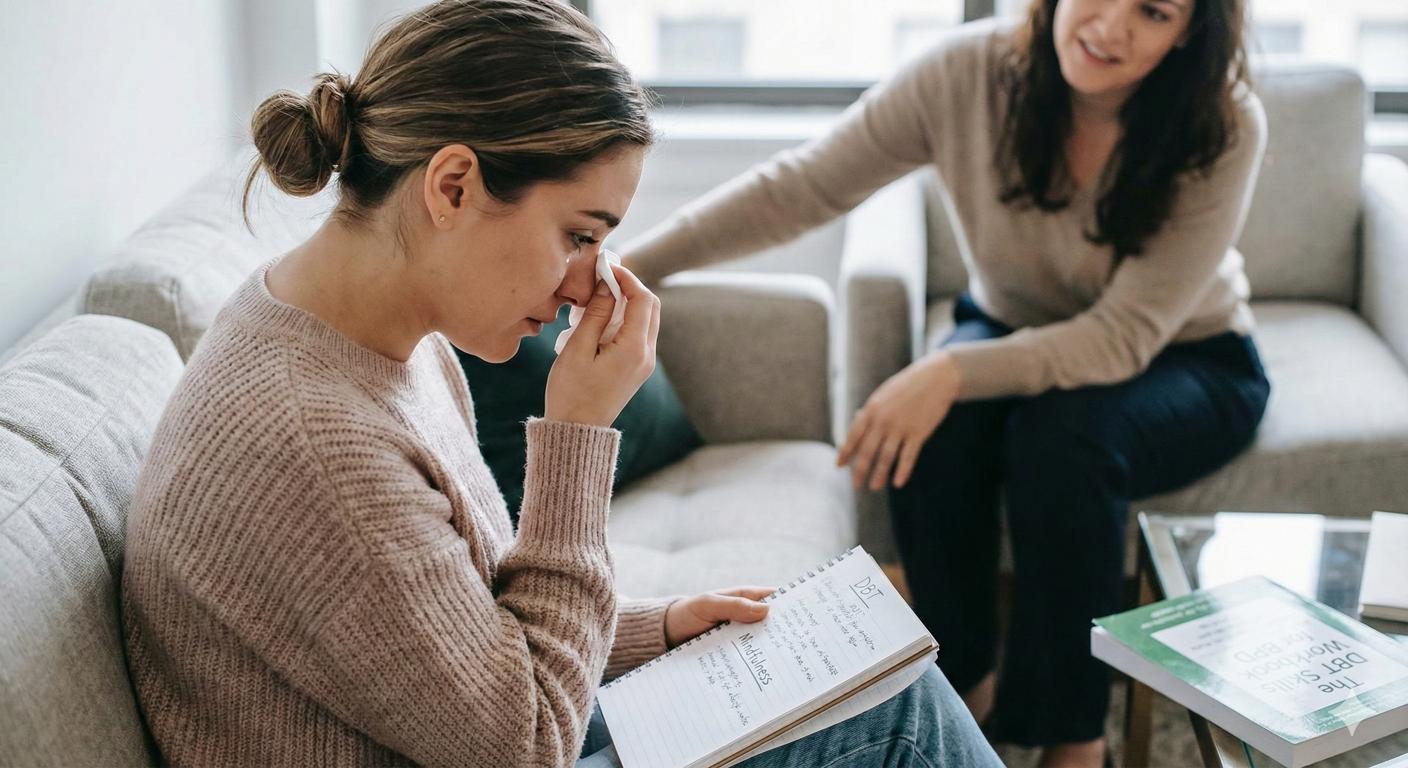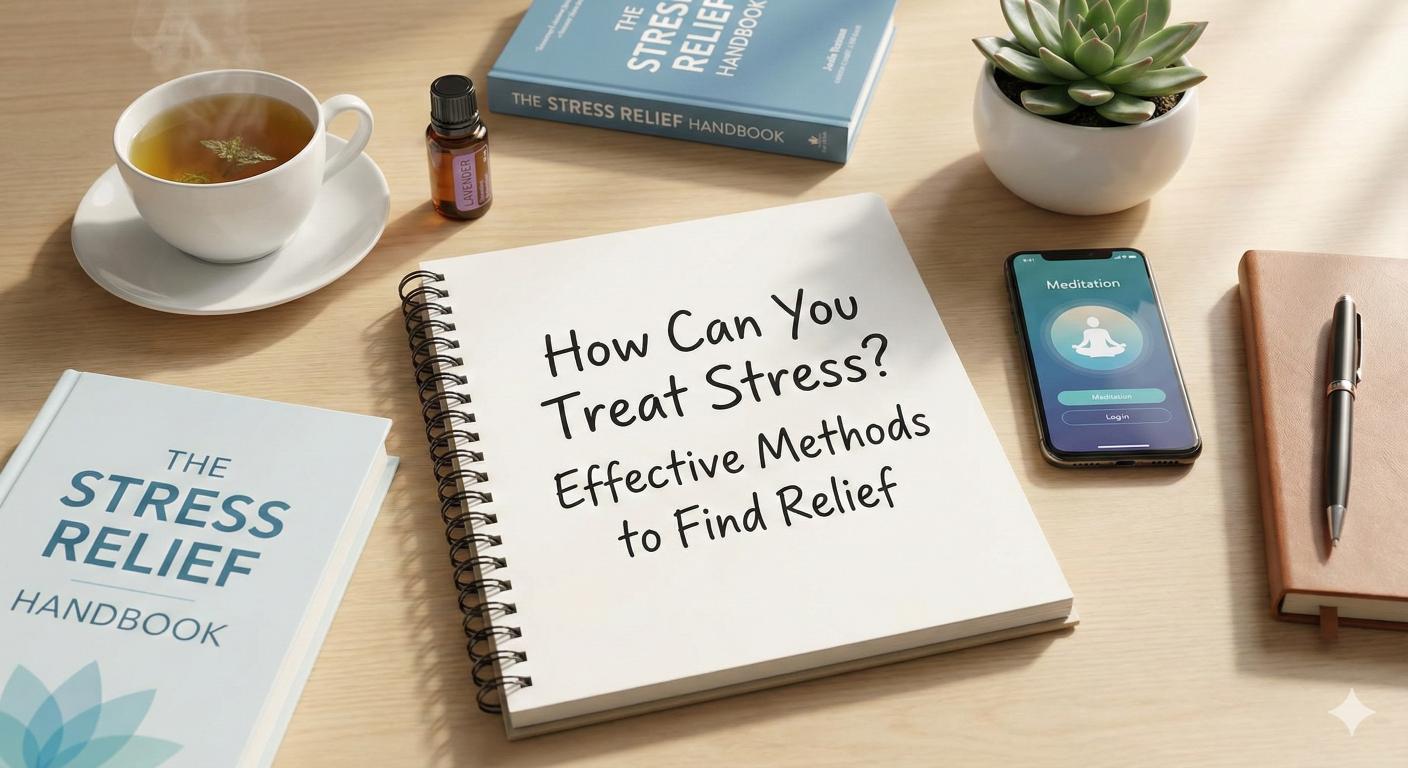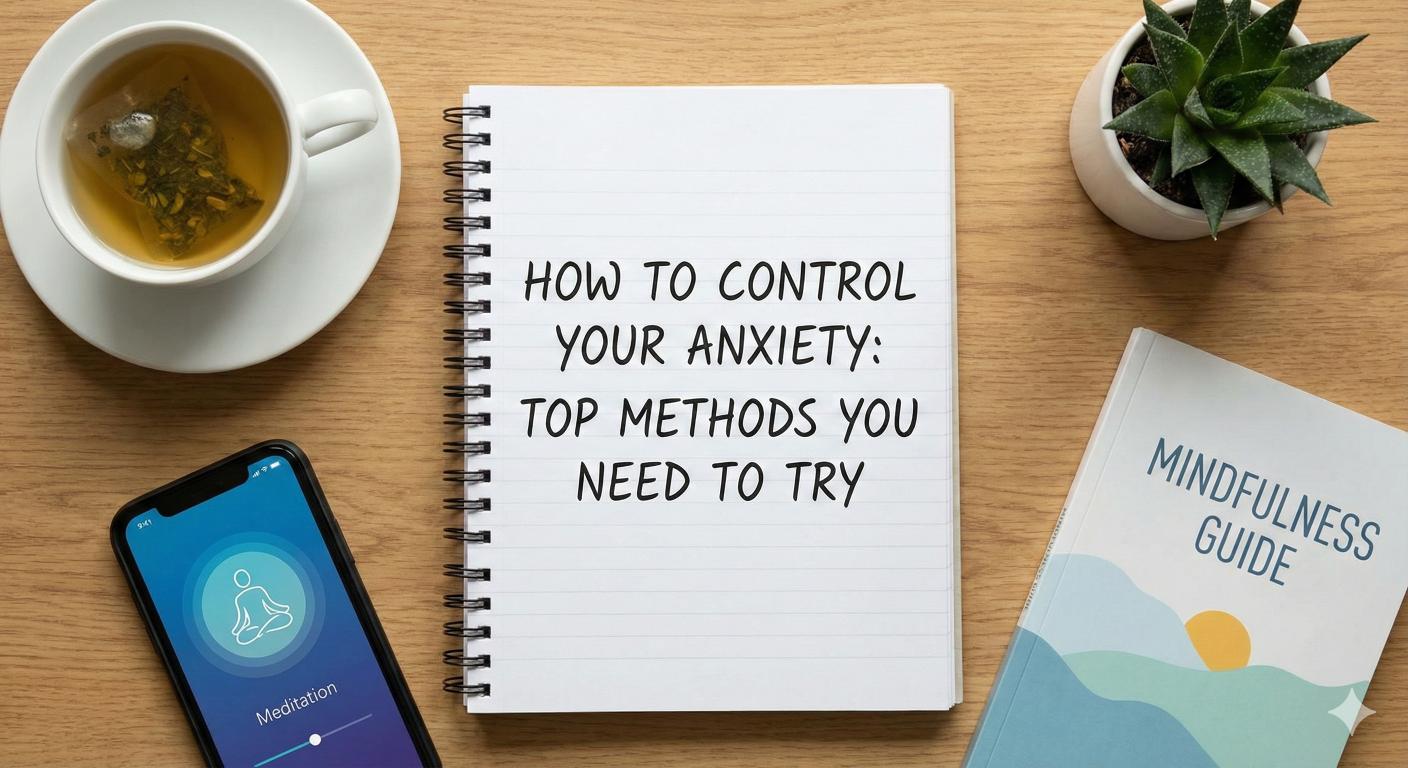What is Anxiety: Understanding the Basics
Discover what is anxiety? Understanding the basics of anxiety disorders, symptoms, and effective coping strategies.

Understanding Anxiety

Defining Anxiety
Anxiety is characterized by feelings of fear, dread, and uneasiness. It often manifests with symptoms such as sweating, restlessness, tension, and a rapid heartbeat. While such feelings may be normal reactions to stress, they can become overwhelming for individuals with anxiety disorders, where fear is persistent and not merely temporary. Understanding the nature of anxiety is essential for recognizing its impact on daily life.
Impact of Anxiety
Living with anxiety can adversely affect various aspects of a person's life. It can hinder one's career, hobbies, and self-esteem, making it difficult to engage comfortably in daily activities. The negative impact of anxiety extends beyond emotional distress; it can significantly influence physical health as well.
Anxiety disorders can create challenges in many areas such as:
Area of ImpactDescriptionWork PerformanceAnxiety can affect concentration and decision-making abilities, leading to decreased job efficiency.Social ActivitiesIndividuals may avoid social situations, resulting in isolation and missed opportunities for connection.Academic PerformanceAnxiety can interfere with studying and exam-taking, negatively impacting educational outcomes.Daily TasksSimple tasks like driving, shopping, or visiting a doctor can become sources of significant stress.
The persistent nature of anxiety disorders can worsen over time, thereby interfering with everyday responsibilities and relationships. For further insights into the physical symptoms of anxiety, visit the physical symptoms of anxiety explained.
If anxiety impacts sleep, check out anxiety and sleep: breaking the cycle of sleepless nights. Understanding these implications can aid individuals in seeking appropriate help, including exploring options for natural remedies for managing anxiety and cognitive-behavioral therapy (CBT) for anxiety disorders.

Types of Anxiety Disorders
Anxiety disorders encompass a variety of conditions characterized by intense feelings of anxiety and fear. These disorders can disrupt daily activities and often manifest during childhood or adolescence, continuing into adulthood. Below are three common types of anxiety disorders:
Generalized Anxiety Disorder
Generalized Anxiety Disorder (GAD) is marked by excessive, uncontrollable worry about various aspects of life, such as health, finances, and social interactions. Individuals with GAD often experience symptoms like restlessness, fatigue, and difficulty concentrating. This condition can interfere with daily functioning and quality of life.
Symptoms of GADFrequencyExcessive worryOftenRestlessnessFrequentlyFatigueCommonDifficulty concentratingCommon
Social Anxiety Disorder
Social Anxiety Disorder (SAD), also known as social phobia, involves an overwhelming fear of social situations. People with this disorder fear being judged or embarrassed in front of others, which can lead to avoidance of social interactions. Symptoms may include intense anxiety in social settings, physical responses like trembling, and difficulty speaking in front of groups.
Symptoms of SADImpactIntense fear of judgmentHigh impact on social lifeAvoidance of social situationsLimits interactionsPhysical symptoms (sweating, trembling)Can be debilitating
Specific Phobias
Specific phobias are characterized by an intense fear of a specific object or situation, such as spiders (arachnophobia), heights (acrophobia), or flying (aviophobia). The fear is often disproportionate to the actual threat posed by the object or situation. Individuals experiencing a specific phobia may go to great lengths to avoid their fear-inducing stimuli.
Common Specific PhobiasDescriptionArachnophobiaFear of spidersAcrophobiaFear of heightsAviophobiaFear of flying
Individuals can also experience more than one type of anxiety disorder simultaneously. Anxiety disorders are among the most prevalent mental health issues, affecting up to 1 in 20 people in the UK with generalized anxiety disorder alone [4]. If someone suspects they have an anxiety disorder, it is advisable to consult with a healthcare professional for guidance on treatment options. For more information regarding coping strategies, consider exploring natural remedies or cognitive-behavioral therapy (CBT) for anxiety disorders.

Causes of Anxiety
Anxiety is a complex condition, and its origins can vary significantly between individuals. Several factors contribute to the development of anxiety disorders, including genetic factors, environmental influences, and medical conditions.
Genetic Factors
The cause of anxiety is not fully understood, but genetics play a significant role. Research indicates that individuals may inherit a predisposition to anxiety disorders from their family members. Having a close relative with anxiety problems increases the chances of experiencing similar issues. This could be due to shared genes that heighten vulnerability or learned behaviors and thought patterns passed down through families [5].
Genetic Influences on Anxiety:
Relationship to PersonRisk IncreaseParent with Anxiety Disorder30-50%Sibling with Anxiety Disorder15-30%No Family History5-10%
Environmental Influences
Environmental factors also significantly impact the development of anxiety. Experiences during childhood, such as trauma and stress, are often linked to increased anxiety later in life. Difficult experiences in adolescence or adulthood can act as triggers as well. Exposure to chronic stressors can lead to long-term anxiety issues.
Some common environmental influences include:
Medical Conditions
Underlying medical conditions can contribute to anxiety disorders. In some instances, the symptoms of anxiety may be the first indicators of another health issue. Conditions that are commonly associated with anxiety include heart disease, diabetes, thyroid problems, respiratory disorders, and history of drug abuse.
Medical Risk Factors for Anxiety:
Medical IssueAssociated Anxiety SymptomsHeart DiseasePanic attacks, increased worryDiabetesMood swings, anxiety over healthThyroid ProblemsNervousness, agitationRespiratory DisordersShortness of breath, panicSubstance AbuseWithdrawal symptoms, anxiety
Understanding the various causes of anxiety can help in recognizing its complexity and the necessity for tailored treatment approaches. For more information on symptoms and treatment methods, check our articles on the physical symptoms of anxiety explained and cognitive-behavioral therapy (CBT) for anxiety disorders.
Symptoms of Anxiety
Anxiety manifests in various forms, affecting individuals physically, emotionally, and behaviorally. Understanding these symptoms is crucial for recognizing anxiety and seeking appropriate help.
Physical Symptoms
Physical manifestations of anxiety can range from mild discomfort to debilitating distress. Common symptoms include:
Physical SymptomsDescriptionIncreased Heart RateThe heart may beat faster, even when resting.Shortness of BreathIndividuals may feel like they can't catch their breath.SweatingExcessive sweating can occur, even in cool environments.TremorsShaking hands or quivering can be prevalent.Muscle TensionA common complaint is tightness or pain in various muscle groups.FatigueChronic tiredness can arise from persistent anxiety.NauseaFeeling sick to the stomach or experiencing digestive issues is common.
For a deeper dive into these indicators, refer to our article on the physical symptoms of anxiety explained.
Emotional Symptoms
Emotional symptoms often accompany physical signs and can greatly affect one's daily life. Common emotional indicators include:
Emotional SymptomsDescriptionPersistent WorryAn ongoing sense of dread or worry about everyday situations.Feelings of FearIntense fears that can feel overwhelming and inescapable.RestlessnessDifficulty relaxing or staying still may be evident.IrritabilityIncreased sensitivity or frustration over minor issues.Trouble ConcentratingDifficulty focusing on tasks or remembering information.Overwhelming FeelingsIntense emotions that can seem disproportionate to the situation.
Behavioral Symptoms
Behavioral changes often emerge as individuals try to manage their anxiety. Common behavioral symptoms include:
Behavioral SymptomsDescriptionAvoidanceSteering clear of places or situations that may trigger anxiety.Compulsive BehaviorsEngaging in repetitive actions to manage anxiety.Changes in Sleep PatternsInsomnia or sleeping more than usual can be common.Social WithdrawalAvoiding social interactions or isolating oneself from friends and family.Decreased PerformanceStruggling with job or academic responsibilities due to anxiety.
Recognizing these symptoms is essential for understanding what is anxiety and seeking effective management strategies. For insights into coping mechanisms, consider exploring natural remedies for managing anxiety or cognitive-behavioral therapy (cbt) for anxiety disorders.
Diagnosis and Treatment
Understanding how anxiety disorders are identified and addressed is crucial for effective management. This section outlines the diagnostic process and various treatment approaches available for those experiencing anxiety.
Diagnostic Process
To diagnose anxiety disorders, healthcare providers conduct a thorough evaluation that includes assessing symptoms, reviewing medical history, and performing physical exams. They may also utilize lab tests to rule out other health issues that could be contributing to symptoms. In many cases, a psychological evaluation by a mental health professional is essential to confirm the diagnosis [1].
The evaluation typically considers the following criteria:
Assessment TypePurposeSymptom EvaluationIdentifies the specific symptoms experiencedMedical HistoryReviews past medical issues that could affect diagnosisPhysical ExamChecks for other health problemsPsychological EvaluationAssesses mental health status and symptoms
Treatment Approaches
There are various approaches to treat anxiety disorders effectively. Psychological interventions, especially those based on cognitive-behavioral therapy (CBT) principles, are essential. CBT focuses on changing negative thought patterns and behaviors, making it a widely recommended method for managing anxiety. Exposure therapy, another psychological approach, helps individuals gradually face and overcome their fears.
Additional treatment options include:
For some individuals, medication may be necessary. Antidepressant medications, particularly selective serotonin reuptake inhibitors (SSRIs), have proven effective in treating adults with anxiety disorders.
Support services are also available. Organizations like Anxiety UK provide helpline services, swift access to psychological therapies, and other forms of therapy, such as clinical hypnotherapy and EMDR therapy, both in person and online [4].
Each individual's treatment plan may vary based on their specific needs, emphasizing the importance of seeking professional assistance for tailored support. For more insights into managing anxiety, including natural remedies for managing anxiety and the impact of anxiety on sleep, additional resources are available.
Coping with Anxiety
Coping with anxiety involves a combination of self-help strategies and professional support. By employing both methods, individuals can manage their symptoms and improve their overall well-being.
Self-Help Strategies
To manage anxiety and stress, incorporating various physical and mental coping strategies can be beneficial. These strategies can include:
StrategyDescriptionRegular ExerciseEngage in at least 2½ hours of moderate-intensity physical activity or 1¼ hours of vigorous-intensity activity per week.Mindfulness and MeditationPractice deep breathing and mindfulness exercises to promote relaxation.Healthy EatingMaintain a balanced diet rich in fruits, vegetables, and whole grains.Sufficient SleepAim for 7-9 hours of quality sleep each night to enhance mood and reduce anxiety.Natural RemediesConsider using natural remedies for managing anxiety such as herbal supplements.Stress Management TechniquesUtilize relaxation techniques and time management skills to alleviate stress.
These strategies can help individuals take active control over their anxiety symptoms, fostering a sense of empowerment and well-being.
Professional Support
Sometimes, self-help strategies might not be enough, and seeking professional support can be vital. Mental health professionals can provide appropriate treatment tailored to individual needs. Key forms of professional support include:
Type of SupportDescriptionPsychological InterventionsCognitive-behavioral therapy (CBT) is a popular treatment for anxiety disorders. CBT helps individuals identify and change negative thought patterns and behaviors that contribute to anxiety [9].MedicationAntidepressant medications, especially selective serotonin reuptake inhibitors (SSRIs), can be useful for treating anxiety disorders [7].Community ProgramsParticipating in community-based programs can enhance social and emotional learning, offering additional coping skills.Helplines and ServicesOrganizations like Anxiety UK provide helpline services and access to therapy including counseling and exposure therapy [4].
Professional support can play a crucial role in recovery from anxiety disorders. With appropriate treatment, individuals can regain their ability to work, study, and participate in everyday activities, paving the way for a fulfilling life.
References
[2]:
[3]:
[4]:
[5]:
[6]:
[7]:
[8]:
[9]:
More Resources
A team ready to start your journey.
Get in touch — today.
We are a safe space – a haven for exceptional individuals to receive discreet, personalized, in-person treatment and care.
.avif)










